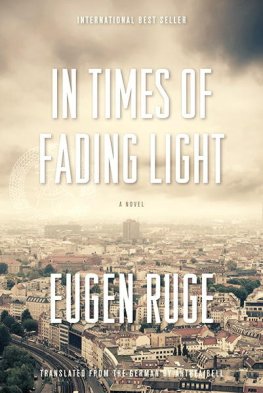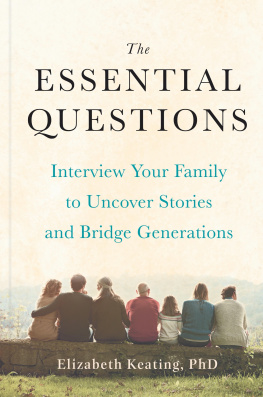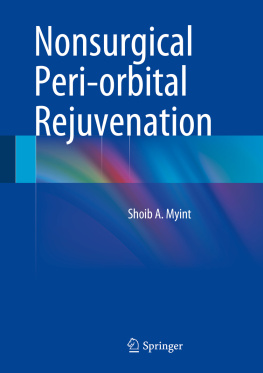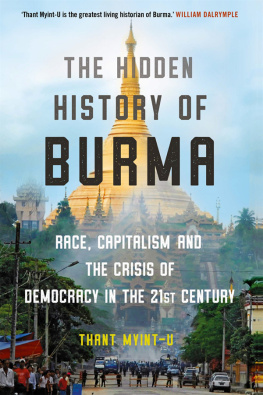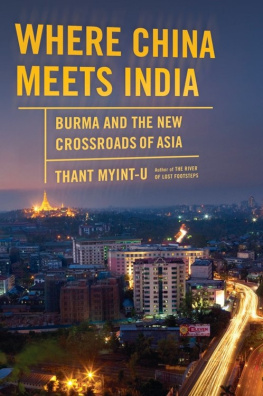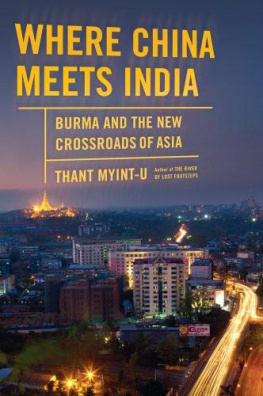NAMES FOR LIGHT
A Family History
THIRII MYO KYAW MYINT
Graywolf Press
Copyright 2021 by Thirii Myo Kyaw Myint
The author and Graywolf Press have provided this e-book to you for your personal use only. You may not make this e-book publicly available in any way. Copyright infringement is against the law. If you believe the copy of this e-book you are reading infringes on the authors copyright, please notify Graywolf Press at: us.macmillanusa.com/piracy.
Early versions of portions of the Sittwe section and portions of the second __________ section appeared in Territory .
This publication is made possible, in part, by the voters of Minnesota through a Minnesota State Arts Board Operating Support grant, thanks to a legislative appropriation from the arts and cultural heritage fund. Significant support has also been provided by the National Endowment for the Arts, Target Foundation, the McKnight Foundation, the Lannan Foundation, the Amazon Literary Partnership, and other generous contributions from foundations, corporations, and individuals. To these organizations and individuals we offer our heartfelt thanks.

This is a work of creative nonfiction. The events, places, people, and conversations depicted here have been recreated from memory and some have been compressed, summarized, or otherwise altered.
Published by Graywolf Press
250 Third Avenue North, Suite 600
Minneapolis, Minnesota 55401
All rights reserved.
www.graywolfpress.org
Published in the United States of America
ISBN 978-1-64445-061-1
Ebook ISBN 978-1-64445-154-0
2 4 6 8 9 7 5 3 1
First Graywolf Printing, 2021
Library of Congress Control Number: 2020944217
Cover design: Kyle G. Hunter
For my family
NAMES FOR LIGHT
I
Leymyethna
My great-grandfather died a man but was reborn as me. He died in a small village in the jungle, the son of a princess hiding from war. The village where they hid was called Leymyethna, four faces, a village built around a pagoda of the same name, bearing a four-faced Buddha. It was my great-grandmothers village, the place where she was born.
The city where I was born was also once a place to hide. Yangon, the end of yan, of peril, enmity, strife. It was a place where there were no enemies, where enemies could not follow. Except enemies did follow, so that by the time I was born, the city had been conquered thrice, by the British, the Japanese, and the military junta. Three enemies to symbolize the three torments of the mind: greed, aversion, delusion.
My great-grandfathers death was foretold by a trunk that slipped off a bridge and fell into the river upon the familys arrival in the village. My great-grandfathers trunk, full of his precious things. The son of a princess, my great-grandfather had inherited diamonds and rubies, sapphires and pearls, jewels my mother had never seen but had heard her mother talk about with remorse, for all the jewels were eventually sold, one by one, to educate my great-grandfathers sons.
No jewels were sold to educate my grandmother. She was one of seven children, the eldest daughter, my great-grandfathers favorite child. Her brother, the eldest son, did not call the doctor when my great-grandfather was dying because, my mother said, he resented the love his father had shown only to my grandmother. My grandmother who was born a girl and born second. She was fourteen when her father died, when the cities were bombed, the schools shut down.
Many years after my great-grandfathers trunk fell in the river, my mother dreamed two trunks were thrown into the artificial lake in the center of the city where she had married my father on a floating, mythical bird. My mother was inside of one trunk, my brother in the other, and both trunks were coffins, sinking into the lake, filling up with cold water, and in the dream my mother tried to scream, to break out, she threw her body against the lid of the trunk, kicked and clawed, but it would not open, she could not breathe, until finally, she ceased to struggle, she accepted death, and as she closed her eyes, the trunk opened and her body floated to the surface. Alone in that cold water. When my mother awoke from the dream, she knew that my brother would not live.
Except my brother did live, since he returned as my eldest sister, who was born with a birthmark on her foot in the same spot where my grandfather had placed a thumbprint of ash on my brothers foot before he was cremated.
There are no marks on my body from a previous life. Unlike my eldest sister, I was born perfectly blank, perfectly bare. For years, I waited for a mark to appear, a sign of who I was or had been or would become. I searched my body, read and reread it carefully. The sharp point of a tooth, the shape of my hands, the places where I could not bear to be touched: my back, my pelvis, under my chin. I was afraid to change my body in any way, to leave my own mark upon it. I got no tattoos, no piercings. I never dyed my hair, and the one time I had it chemically straightened, I shaved it off afterward. I believed I had to keep my body plain and pristine if I was to receive a sign.
More than once, I believed I had immaculately conceived a child. It is possible for a body to mimic the conditions of pregnancy if the mind believes, possible for the uterus to expand, for the cervix to soften, for the belly to swell. My belly did not swell, but for several months, I felt nauseated and tender, and did not bleed. Every time I found the blood, on the sheets or on my underwear, it was both a relief and a loss.
And my great-grandfathers trunk was recovered. The trunk that slipped off the bridge and fell into the river. The river was not very wide or very deep, and men from the village dove into the water to retrieve it. The family jewels were saved, to be locked in an attic and eventually sold.
Only my great-grandfather had seen his trunk fall into the water. He had seen it sink beneath the surface, carried away by the current. He could not unsee what he had seen. He knew it was an omen of death.
As a child, I conflated my great-grandfathers body and his trunk of possessions and imagined it was he who slipped off the bridge and fell into the river. I imagined the water turning pink where he hit his head on a rock, the water carrying him away, downstream, then around a bend, so my great-grandmother and grandmother could no longer see him. All rivers lead to waterfalls or to the ocean, so I imagined my great-grandfather was transported somewhere no one could follow him, although my grandmother did try, since she moved south to Yangon, then called Rangoon, a city by the ocean, and my parents and I tried to follow him even farther since we moved across the Pacific. As a child, I imagined that one day my great-grandfathers body would wash up on a beach in Half Moon Bay the way dead whales, jellyfish, and cows sometimes did.
Even when I learned that my great-grandfather had died of a hemorrhagic stroke, a blood vessel that ruptured in his brain, even when I learned that he had died sitting in a chair, not drowning in a river, and that, for my great-grandfather, dying in the jungle, dying in wartime meant dying in the comfortable ancestral home of his wife, the daughter of a village elder, I could not erase the path that the river had carved in my mind. From under the bridge in Leymyethna, south to join the Pathein River, then through the delta into the Pacific Ocean and across it to the shores of Northern California. A path created by my great-grandfathers body, or rather the absence of his body, an absence that I had to fill with my body since I was reborn from him.


